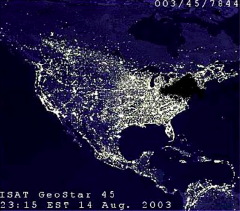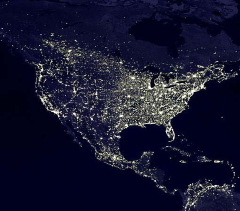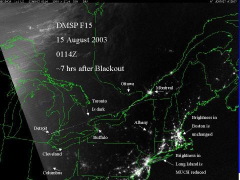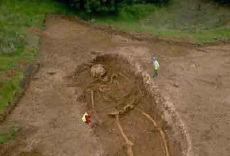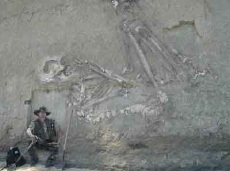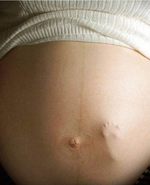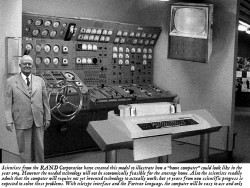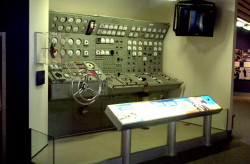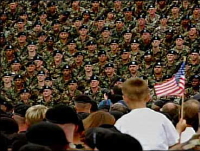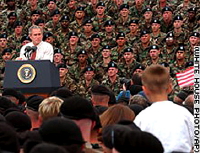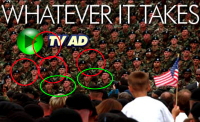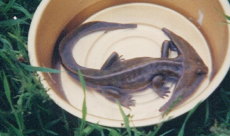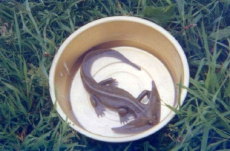 |  |
| HOME | FORUM | REGISTER | LOGIN | HOAXIPEDIA | TOP 100 APRIL FOOLS | COLLEGE PRANKS | ABOUT THE CURATOR |
| A HISTORY OF HOAXES | HOAX WEBSITES | HOAX PHOTO TESTS | GULLIBILITY TESTS | TALL-TALE CREATURES | CONTACT |
About the Hoax Photo Database
The Hoax Photo Database catalogs examples of photo fakery, from the beginnings of photography up to the present. Included in the database are photos that are "real," but which have been suspected of being fake, as well as images whose veracity remains undetermined. The photos are displayed in chronological order (or reverse-chronological). They're categorized by theme, technique of fakery (if known), and time period. See below for the full list of categories.
Other viewing options
View database as Thumbnail Gallery, reverse-chronological or chronological.
The Hoax Photo Database catalogs examples of photo fakery, from the beginnings of photography up to the present. Included in the database are photos that are "real," but which have been suspected of being fake, as well as images whose veracity remains undetermined. The photos are displayed in chronological order (or reverse-chronological). They're categorized by theme, technique of fakery (if known), and time period. See below for the full list of categories.
Other viewing options
View database as Thumbnail Gallery, reverse-chronological or chronological.
Techniques of Fakery
Numerous techniques of image manipulation are now available to photographers. Instead of trying to list every one, we've narrowed them down to a few broad categories.
Time Periods
Numerous techniques of image manipulation are now available to photographers. Instead of trying to list every one, we've narrowed them down to a few broad categories.
- Added Details
- Deleted Details
- False Caption
- Manipulating Existing Details
- Staged Scene
- Trick Angle
Time Periods
This page has been viewed 0 times.
The Real Julia

Status: Fake (composite)
Date: July 2003
Date: July 2003
Although Julia Roberts appeared on the cover of Redbook, she had not posed for the magazine. To create the image, Redbook combined an image of her head, from a paparazzi shot taken at the 2002 People’s Choice awards, with a shot of her body taken four years previously at the movie premiere of Notting Hill. Ironically, the headline on the magazine read “The Real Julia.” Julia Roberts complained, and Redbook apologized. Roberts’ publicist responded, “it’s a shame they didn’t use the body that went with the head, because it was a great Giorgio Armani pantsuit.”
Technique: . Time Period: .
Themes: Celebrities, Digital Plastic Surgery, Head Transplants, Magazine Covers, 2000-2004,.
Themes: Celebrities, Digital Plastic Surgery, Head Transplants, Magazine Covers, 2000-2004,.
The Great Blackout of 2003
Status: Fake (digitally altered)
Date: Found online in late August 2003
Date: Found online in late August 2003
On August 14, 2003, a blackout hit the northeastern United States. Almost the next day a photo began circulating online claiming to be a NASA satellite image of the event. The entire United States could be seen, with dots of light revealing major population centers -- except for the northeastern corner of the country, which was covered in inky blackness.
The picture was a hoax. It was an altered detail from an image that had appeared on NASA's Astronomy Picture of the Day website on November 27, 2000 (and again on August 10, 2002). The original image, titled "Earth at Night," was a composite made by combining hundreds of photos taken by Defense Department meteorological satellites in order to show what the entire surface of the Earth at night would look like from space. The hoaxer had simply cropped the photo to show only the United States (middle) and then had darkened the relevant portion to simulate a blackout.
In reality, the blackout did not create such a total zone of darkness. Actual satellite images taken during the blackout by NOAA satellites (bottom) show many areas, such as Boston, where the lights were still on.
The picture was a hoax. It was an altered detail from an image that had appeared on NASA's Astronomy Picture of the Day website on November 27, 2000 (and again on August 10, 2002). The original image, titled "Earth at Night," was a composite made by combining hundreds of photos taken by Defense Department meteorological satellites in order to show what the entire surface of the Earth at night would look like from space. The hoaxer had simply cropped the photo to show only the United States (middle) and then had darkened the relevant portion to simulate a blackout.
In reality, the blackout did not create such a total zone of darkness. Actual satellite images taken during the blackout by NOAA satellites (bottom) show many areas, such as Boston, where the lights were still on.
Trophy Turkey

Status: Real but arguably misleading (captions omitted relevant details)
Date: Thanksgiving 2003
Date: Thanksgiving 2003
President Bush made a surprise visit to the troops in Iraq on Thanksgiving Day, 2003. While there he helped serve them a traditional holiday dinner. The most widely published image from the trip showed him grinning as he carried a tray bearing a beautiful golden brown turkey. The photo was taken by pool photographer Pablo Martinez Monsivais. The president's popularity rose in polls conducted soon after the trip.
What news audiences were not immediately told (but which Mike Allen, a Washington Post reporter who had traveled to Baghdad with Bush, later revealed) was that the turkey Bush was carrying was actually a decorative centerpiece known in the food service industry as a "trophy turkey." The food the soldiers actually got was served from cafeteria-style steam trays.
There were no allegations the photographer had staged the scene. Apparently Bush spontaneously picked up the turkey, and the photographer snapped the picture. But the media was criticized for disseminating an image that gave a misleading view of the Thanksgiving event.
Many people (including this site and The New York Times) mistook Allen's revelation to mean that the turkey Bush was carrying was a plastic prop. However, this was not the case. Allen specified that the turkey had been "roasted and primped." In other words, it was real, but not intended for consumption by the troops. The New York Times published a retraction, noting this error, on July 11, 2004.
What news audiences were not immediately told (but which Mike Allen, a Washington Post reporter who had traveled to Baghdad with Bush, later revealed) was that the turkey Bush was carrying was actually a decorative centerpiece known in the food service industry as a "trophy turkey." The food the soldiers actually got was served from cafeteria-style steam trays.
There were no allegations the photographer had staged the scene. Apparently Bush spontaneously picked up the turkey, and the photographer snapped the picture. But the media was criticized for disseminating an image that gave a misleading view of the Thanksgiving event.
Many people (including this site and The New York Times) mistook Allen's revelation to mean that the turkey Bush was carrying was a plastic prop. However, this was not the case. Allen specified that the turkey had been "roasted and primped." In other words, it was real, but not intended for consumption by the troops. The New York Times published a retraction, noting this error, on July 11, 2004.
References:
Allen, M. (Dec 4, 2003). "The bird was perfect, but not for dinner." The Washington Post.
Allen, M. (Dec 4, 2003). "The bird was perfect, but not for dinner." The Washington Post.
Technique: False Captions. Time Period: .
Themes: Food, Military, Photojournalism, Politics, 2000-2004,.
Themes: Food, Military, Photojournalism, Politics, 2000-2004,.
Hanoi John
Status: Fake (composite)
Date: Circulating online since Feb 2004
Date: Circulating online since Feb 2004
The top image appears to be a news photo of John Kerry sharing the stage with Jane Fonda at an anti-Vietnam peace rally. But this scene never occurred in real life. The photo first appeared in 2004 on the website vietnamveteransagainstjohnkerry.com, at a time during the 2004 presidential campaign when conservatives were trying to raise questions about Kerry's patriotism. An image that associated Kerry with Fonda, the bête noire of pro-war conservatives, served this purpose. Vietnamveteransagainstjohnkerry captioned the image ‘Hanoi John’ — a reference to the nickname ‘Hanoi Jane’ that Vietnam veterans had given Jane Fonda. From there it quickly spread throughout the internet.
The image was quickly debunked. Photographer Ken Light recognized the image as one he had taken in 1971 at a Peace Rally in Long Island. But his original picture had shown Kerry sitting alone. Not only had Fonda not been anywhere in the shot, she hadn’t even attended the rally. A hoaxer had combined an image of Jane Fonda, taken from a 1972 photo by Owen Franken, with Light's image of Kerry. Both images (bottom row) were available from Corbis.com.
The image was quickly debunked. Photographer Ken Light recognized the image as one he had taken in 1971 at a Peace Rally in Long Island. But his original picture had shown Kerry sitting alone. Not only had Fonda not been anywhere in the shot, she hadn’t even attended the rally. A hoaxer had combined an image of Jane Fonda, taken from a 1972 photo by Owen Franken, with Light's image of Kerry. Both images (bottom row) were available from Corbis.com.
References:
• Photo fakery ‘at its worst’ riles Ken Light. (Feb 18, 2004). UCBerkeley News.
• John Kerry at the Register for Peace Rally, Corbis.com.
• Jane Fonda Protesting, Corbis.com.
• Photo fakery ‘at its worst’ riles Ken Light. (Feb 18, 2004). UCBerkeley News.
• John Kerry at the Register for Peace Rally, Corbis.com.
• Jane Fonda Protesting, Corbis.com.
Giant Human Skeleton
Status: Fake (doctored)
Date: Circulating online since early 2004
Date: Circulating online since early 2004
An image (top) of a giant skeleton being unearthed by an archaeological team began to circulate online in early 2004. It was accompanied by text that described how this skeleton had been found in Saudi Arabia:
In April 2004 the picture and details from the story were reported as fact by Bangladesh's The New Nation newspaper as well as by papers in India, giving the story added credibility.
In reality, the picture was created in 2002 by "IronKite," a member of Worth1000.com who had submitted it as an entry in an "Archaeological Anomalies" photo contest. The contest rules challenged entrants to "create an archaeological hoax... show a picture of an archaeological discovery that looks so real, had it not appeared at Worth1000, people might have done a double take."
The original source of the image was an aerial shot (second from top) of a mastodon dig outside Hyde Park, New York led by researchers from Cornell University.
A variant of the hoax resurfaced in 2007, accompanied by three more images of giant human skeletons (bottom three). These images came from the same Worth1000 archaeological anomalies contest.
Recent gas exploration activity in the south east region of the Arabian desert uncovered a skeletal remains of a human of phenomenal size. This region of the Arabian desert is called the Empty Quarter, or in Arabic, 'Rab-Ul-Khalee'. The discovery was made by the Aramco Exploration team. As God states in the Quran that He had created people of phenomenal size the like of which He has not created since. These were the people of Aad where Prophet Hud was sent. They were very tall, big, and very powerful, such that they could put their arms around a tree trunk and uproot it...
Ulema's of Saudi Arabia believe these to be the remains of the people of Aad. Saudi Military has secured the whole area and no one is allowed to enter except the ARAMCO personnel. It has been kept in secrecy, but a military helicopter took some pictures from the air and one of the pictures leaked out into the internet in Saudi Arabia.
Ulema's of Saudi Arabia believe these to be the remains of the people of Aad. Saudi Military has secured the whole area and no one is allowed to enter except the ARAMCO personnel. It has been kept in secrecy, but a military helicopter took some pictures from the air and one of the pictures leaked out into the internet in Saudi Arabia.
In April 2004 the picture and details from the story were reported as fact by Bangladesh's The New Nation newspaper as well as by papers in India, giving the story added credibility.
In reality, the picture was created in 2002 by "IronKite," a member of Worth1000.com who had submitted it as an entry in an "Archaeological Anomalies" photo contest. The contest rules challenged entrants to "create an archaeological hoax... show a picture of an archaeological discovery that looks so real, had it not appeared at Worth1000, people might have done a double take."
The original source of the image was an aerial shot (second from top) of a mastodon dig outside Hyde Park, New York led by researchers from Cornell University.
A variant of the hoax resurfaced in 2007, accompanied by three more images of giant human skeletons (bottom three). These images came from the same Worth1000 archaeological anomalies contest.
Technique: Composite Images, Drawn-in Details. Time Period: .
Themes: Paranormal, viral images, 2000-2004,.
Themes: Paranormal, viral images, 2000-2004,.
Fetal Footprint
Status: Undetermined (probably fake)
Date: Circulating online since mid-2004
Date: Circulating online since mid-2004
The source of this photo remains unknown, making it difficult to say with certainty whether it is real or fake. However, it is very probably fake. Although a woman will often see her belly bulge when a baby thrusts out a limb, the abdominal wall is too muscular and thick to allow a footprint to be seen with this clarity. The only way a fetal footprint could be seen in this way would be in the rare case of an ectopic pregnancy, which involves a fetus developing outside the uterus. This condition can be life-threatening for both mother and baby, but this photo does not appear to show an ectopic pregnancy. In addition, the footprint seems disproportionately large for a fetus.
Technique: Drawn-in Details. Time Period: .
Themes: Children, Strange Body Parts, 2000-2004, Undetermined Status, viral images,.
Themes: Children, Strange Body Parts, 2000-2004, Undetermined Status, viral images,.
Home Computer of the Future
Status: Fake (intended as a joke)
Date: First posted online September 11, 2004
Date: First posted online September 11, 2004
The top photo was one of the most forwarded e-mail attachments of 2004. It purported to show a picture published in Popular Science magazine in 1954, imagining what a home computer might look like fifty years in the future. The caption read:
The photograph was actually created in 2004 by Danish software sales and support technician Troels Eklund Andersen as an entry in a Fark Photoshop contest. (Fark regularly challenges its readers to digitally alter images in amusing ways.)
Andersen took a photo of a submarine's maneuvering room on exhibit at the Smithsonian (bottom), made it black-and-white, then pasted in the teletype printer, the old-style television, and the man. Then he added the text at the bottom. He never imagined the image would generate the response it did, nor that it would start circulating by email and fool so many people. It even fooled Scott McNealy, CEO of Sun Microsystems, who displayed it at a computer conference as proof of the impossibility of predicting future technology.
Scientists from the RAND Corporation have created this model to illustrate how a "home computer" could look like in the year 2004. However the needed technology will not be economically feasible for the average home. Also the scientists readily admit that the computer will require not yet invented technology to actually work, but 50 years from now scientific progress is expected to solve these problems. With teletype interface and the Fortran language, the computer will be easy to use and only...
The photograph was actually created in 2004 by Danish software sales and support technician Troels Eklund Andersen as an entry in a Fark Photoshop contest. (Fark regularly challenges its readers to digitally alter images in amusing ways.)
Andersen took a photo of a submarine's maneuvering room on exhibit at the Smithsonian (bottom), made it black-and-white, then pasted in the teletype printer, the old-style television, and the man. Then he added the text at the bottom. He never imagined the image would generate the response it did, nor that it would start circulating by email and fool so many people. It even fooled Scott McNealy, CEO of Sun Microsystems, who displayed it at a computer conference as proof of the impossibility of predicting future technology.
Whatever It Takes
Status: Fake (cloned-in details)
Date: October 2004
Date: October 2004
Toward the end of the 2004 presidential campaign, the Bush campaign released a television ad titled "Whatever It Takes." The ad included a photo (top) of a crowd of soldiers listening to a speech with a child in the foreground waving an American flag.
A poster on the liberal Daily Kos weblog soon noticed that the image had evidently been faked since the same faces appeared in different places throughout the crowd. Initially it was suspected that faces had been cloned in order to make the crowd appear larger than it actually was. But the Bush campaign quickly responded to the growing controversy, revealing that the original version of the photo (middle) had shown Bush standing at a podium. A video editor had been asked to edit the image in order to focus on the boy in the foreground waving the flag. Instead of cropping the image, the editor had removed the podium by copying portions of the crowd over it.
The Kerry campaign released a statement saying, "Now we know why this ad is named 'Whatever It Takes.' This administration has always had a problem telling the truth from Iraq to jobs to health care." The Bush campaign replaced the ad with a new version that did not include the doctored photo.
In the bottom photo the cloned faces in the crowd have been circled (image from Daily Kos).
A poster on the liberal Daily Kos weblog soon noticed that the image had evidently been faked since the same faces appeared in different places throughout the crowd. Initially it was suspected that faces had been cloned in order to make the crowd appear larger than it actually was. But the Bush campaign quickly responded to the growing controversy, revealing that the original version of the photo (middle) had shown Bush standing at a podium. A video editor had been asked to edit the image in order to focus on the boy in the foreground waving the flag. Instead of cropping the image, the editor had removed the podium by copying portions of the crowd over it.
The Kerry campaign released a statement saying, "Now we know why this ad is named 'Whatever It Takes.' This administration has always had a problem telling the truth from Iraq to jobs to health care." The Bush campaign replaced the ad with a new version that did not include the doctored photo.
In the bottom photo the cloned faces in the crowd have been circled (image from Daily Kos).
References:
• "A final volley of commercials." (Oct 29, 2004). Washington Post.
• "Bush Campaign Replaces Ad That Had Doctored Images." (Oct 29, 2004). New York Times.
• "The fake troops in Bush's new ad," Daily Kos.
• "A final volley of commercials." (Oct 29, 2004). Washington Post.
• "Bush Campaign Replaces Ad That Had Doctored Images." (Oct 29, 2004). New York Times.
• "The fake troops in Bush's new ad," Daily Kos.
Technique: Cloning, Deleted Details. Time Period: .
Themes: Advertising, Military, Politics, 2000-2004,.
Themes: Advertising, Military, Politics, 2000-2004,.
Modern-Day Diplocaulus
Status: Fake (clay model)
Date: Circulating online since late 2004
Date: Circulating online since late 2004
The caption that accompanied these photos, when they circulated online in late 2004, claimed that the mysterious creature in the bucket had been found in Malta.
Professor Patrick Schembri of the Department of Biology at the University of Malta discussed the photos in an article that was published in November 2004 in the Malta Times. He identified the creature as an amphibian called a Diplocaulus, but he noted that the photos had to be fake because the Diplocaulus had been extinct for 270 million years. He speculated that the creature was a model.
The image was later traced back to an amateur Japanese model-maker who had taken the photo back in 1992 and submitted it to a magazine as part of a contest.
Professor Patrick Schembri of the Department of Biology at the University of Malta discussed the photos in an article that was published in November 2004 in the Malta Times. He identified the creature as an amphibian called a Diplocaulus, but he noted that the photos had to be fake because the Diplocaulus had been extinct for 270 million years. He speculated that the creature was a model.
The image was later traced back to an amateur Japanese model-maker who had taken the photo back in 1992 and submitted it to a magazine as part of a contest.
Technique: Models and Cutouts. Time Period: .
Themes: Animals, Fish, viral images, Cryptozoology, 2000-2004,.
Themes: Animals, Fish, viral images, Cryptozoology, 2000-2004,.
Tsunami Seen From a High-Rise
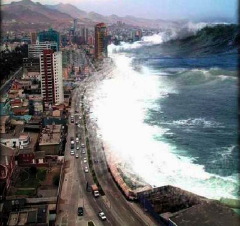 |
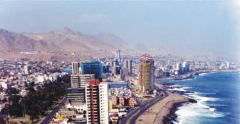 |
Status: Fake (composite)
Date: Appeared online in early January 2005
Date: Appeared online in early January 2005
After the Asian tsunami of December 2004, a picture (top) began to circulate online showing an enormous wave, hundreds of feet high, bearing down on a city. The accompanying caption read:
The image was fake. For a start, the caption was wrong since the city in the photo was not Phuket. People quickly identified it as the skyline of Antofagasta, Chile (bottom, image from World City Photos). But such a scene had never occurred in Antofagasta. Instead, the gigantic wave had been digitally inserted into the picture.
The size of the wave was another flaw. Eyewitness accounts of the Asian tsunami reported that the water came inland as a steadily increasing swell, not as a towering super-wave.
This picture is not a fake. It appears to have been taken from a hi-rise building window in downtown Phuket Thailand. The power of nature is hard to comprehend, especially the destructiveness of water.
The image was fake. For a start, the caption was wrong since the city in the photo was not Phuket. People quickly identified it as the skyline of Antofagasta, Chile (bottom, image from World City Photos). But such a scene had never occurred in Antofagasta. Instead, the gigantic wave had been digitally inserted into the picture.
The size of the wave was another flaw. Eyewitness accounts of the Asian tsunami reported that the water came inland as a steadily increasing swell, not as a towering super-wave.
References:
Index of Chile Photos, World City Photos.
Index of Chile Photos, World City Photos.
